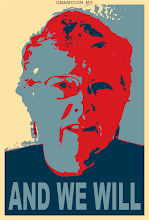A Soldier Comes Home to Alaska, Too Early and Yet Too Late
BARROW, Alaska — When the soldiers from the frozen tundra shipped out for the burning sands of Iraq, Staff Sgt. Billy Brown promised the women that he’d bring their men back alive.
But when Sergeant Brown returned just two weeks later, he didn’t bring his men at all. He came with a funeral detail. He came cargo, in a silver coffin with wood handles cloaked in an American flag. He is believed to be the first Eskimo killed because of this war. He was 54.
Sergeant Brown, an Alaska national guardsman, never got to a battlefield. He was killed when a tractor-trailer slammed into the back of his Humvee late in July while he was on training maneuvers at Camp Shelby in Mississippi.
His death rattled this town of 4,200, mostly Inupiaq Eskimos, located 500 roadless miles from anywhere and 350 miles north of the Arctic Circle.
Finally, tangibly, the war has reached one of the most isolated corners of the country.
“Until now the war was more like a television show,” said Edward S. Itta, mayor of the North Slope Borough, in which Barrow lies, and a friend of Sergeant Brown’s. “You don’t question the war until it touches you. Only then, when a man like Billy, an important man to us, comes home dead, does the question become clear. We fight. But to what end? What’s in it for my grandchildren?”
During the cold war, the battle line was drawn right here on the North Slope, with the Soviets skulking just across the Bering Strait. Most Alaska Guard members stayed in the state, protecting the home front.
But the world has changed. For this war, 670 Guard members have been called up from rural Alaska, its largest foreign deployment ever. The Alaska Guard estimates that one-third of its members are Eskimo, so most likely a third of those deployed are indigenous men, officials say, though the military does not keep official racial records of this type.
Among the most skilled was Staff Sergeant Brown, a 29-year veteran of the Guard and an Arctic survival specialist.
“He could have retired years ago,” said his niece Audrey Saganna. But he volunteered for the mission so other soldiers who had served multiple tours in Iraq could get a rest, she said.


Links to this post:
Create a Link
<< Home